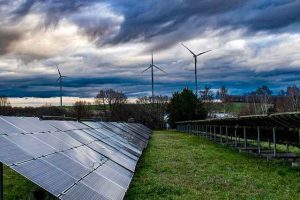 Local movers Alpharetta GA homeowners regularly hire to render junk removal services, play an important role in maintaining the city’s environment-friendly condition. The moving company Deluxe Moving Solutions (DMS) for one, is known for deploying only experts who have full awareness about the importance of clearing away junks properly and safely.
Local movers Alpharetta GA homeowners regularly hire to render junk removal services, play an important role in maintaining the city’s environment-friendly condition. The moving company Deluxe Moving Solutions (DMS) for one, is known for deploying only experts who have full awareness about the importance of clearing away junks properly and safely.
DMS provides its junk removal crew with the right tools and transport equipment that can help prevent soil, air and water pollution and contamination of natural resources. After all, removing junk is not just about the disposal and transfer to a new location of a homeowner’s discards and unwanted items. It’s also about working toward sustaining and improving the natural conditions of the environment.
Advantages of Hiring DMS to Take Away Junk and Other Discards
One of the reasons why Alpharetta is recognized as one of the best places to live in in the US is the city’s environment-friendly disposition. Residents are well aware of the importance of keeping their home clutter and junk-free to make their community a healthy place to live in. To have peace of mind that the waste and junk-removal processes are being carried out properly, many homeowners in Alpharetta engage the services of Deluxe Moving Solutions.
First off, the company makes it a point to assign professionals familiar with Atlanta’s local laws and specific regulations concerning waste removal activities. Atlanta’s policies include compliance with the three R’s of proper waste management: Reduce, Recycle and Reuse.
Although the Atlanta-based moving company usually follows a schedule when rendering removal services, they set a date and time that works best for customers. In fact, the company can even accommodate those who prefer to have the job done on the same day the appointment was made.
Customers may also request the company to send over a junk removal expert who can help them assess other items that can be hauled away.
DMS also offers customers the option of picking up for a fee, items they want to leave behind when moving to a new residence; or to free and clean up space needed for a renovation or remodelling construction project.
Types of Junk Removal Services Offered by Deluxe Moving Solutions
Deluxe Moving Solutions company offers removal expertise and services in hauling away the following:
 Old and heavy appliances like stoves, refrigerators, washing machines, and pieces of furniture like tables, chairs, couches,etc. Care will be given when transporting appliances and furniture pieces so they can arrive at non-profit charitable organizations or non-profit recycling centers, without further damage.
Old and heavy appliances like stoves, refrigerators, washing machines, and pieces of furniture like tables, chairs, couches,etc. Care will be given when transporting appliances and furniture pieces so they can arrive at non-profit charitable organizations or non-profit recycling centers, without further damage.
As junk haulers, DMS movers are also into removing yard and construction debris, by employing eco-friendly methods to efficiently free up usable yard spaces. Besides, prompt and thorough removal of construction wastes at the site enhances workplace safety as well as prevent contaminations caused by run offs.


 Extreme record-breaking heat has been affecting Asian regions since April up to the present; exacerbating the living conditions of vulnerable people. The heat has been unbearable for those forced to live in refugee camps and in informal settlements; particularly those living in makeshift settlements that do not provide protection to residents in extreme weather conditions.
Extreme record-breaking heat has been affecting Asian regions since April up to the present; exacerbating the living conditions of vulnerable people. The heat has been unbearable for those forced to live in refugee camps and in informal settlements; particularly those living in makeshift settlements that do not provide protection to residents in extreme weather conditions.
 It’s a known fact that fossil fuel use has caused severe damages to the
It’s a known fact that fossil fuel use has caused severe damages to the  The continued use of fossil fuel has caused serious damages to the planet that humanity is already racing against time when the damages caused are no longer reversible. The JSO activists have recently been taking desperate steps in demanding the immediate halt on all future approval of licenses to conduct further exploration and production of fossil fuels in the United Kingdom.
The continued use of fossil fuel has caused serious damages to the planet that humanity is already racing against time when the damages caused are no longer reversible. The JSO activists have recently been taking desperate steps in demanding the immediate halt on all future approval of licenses to conduct further exploration and production of fossil fuels in the United Kingdom.